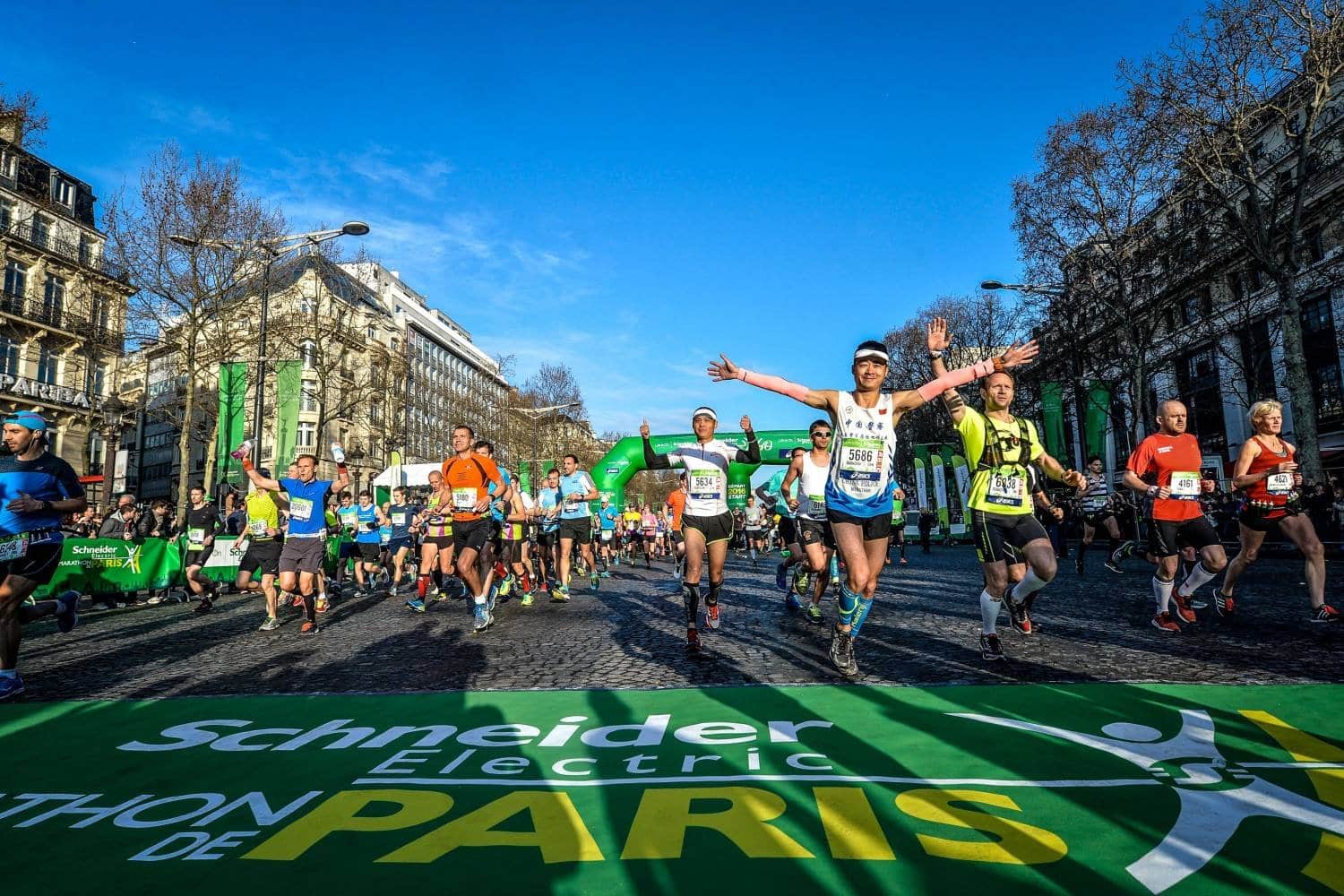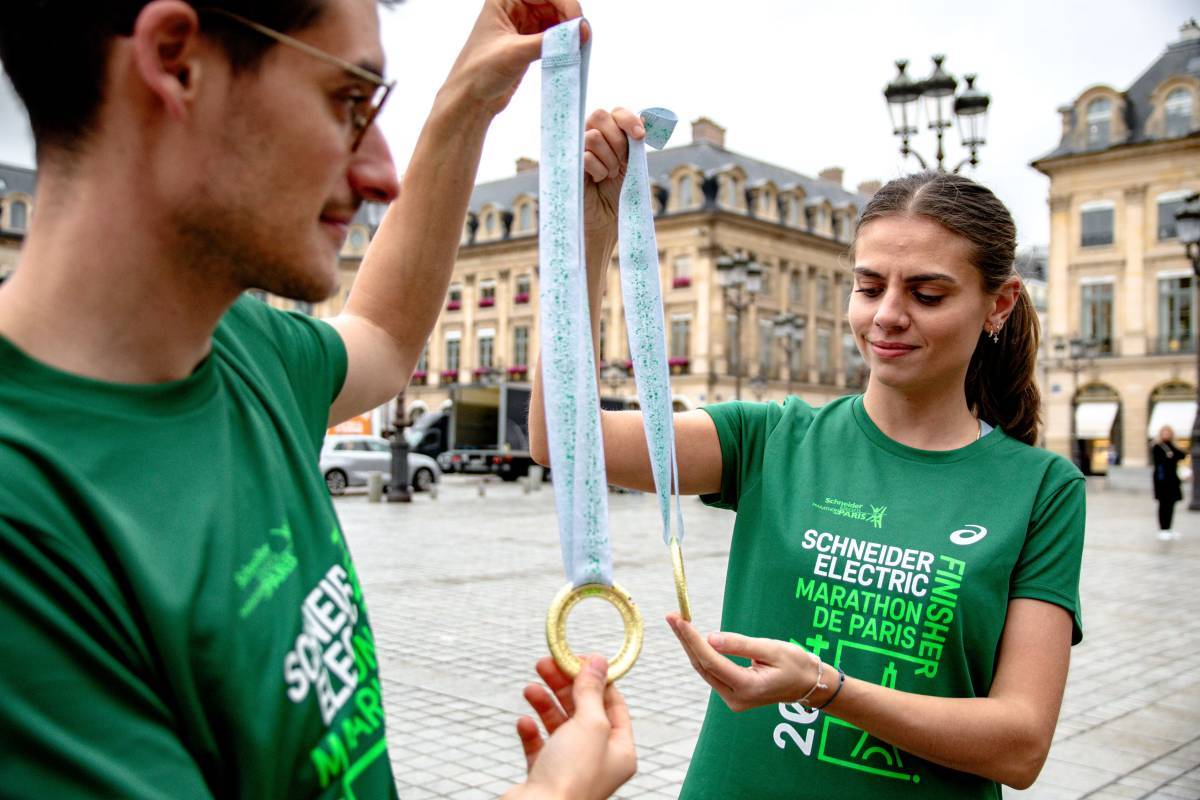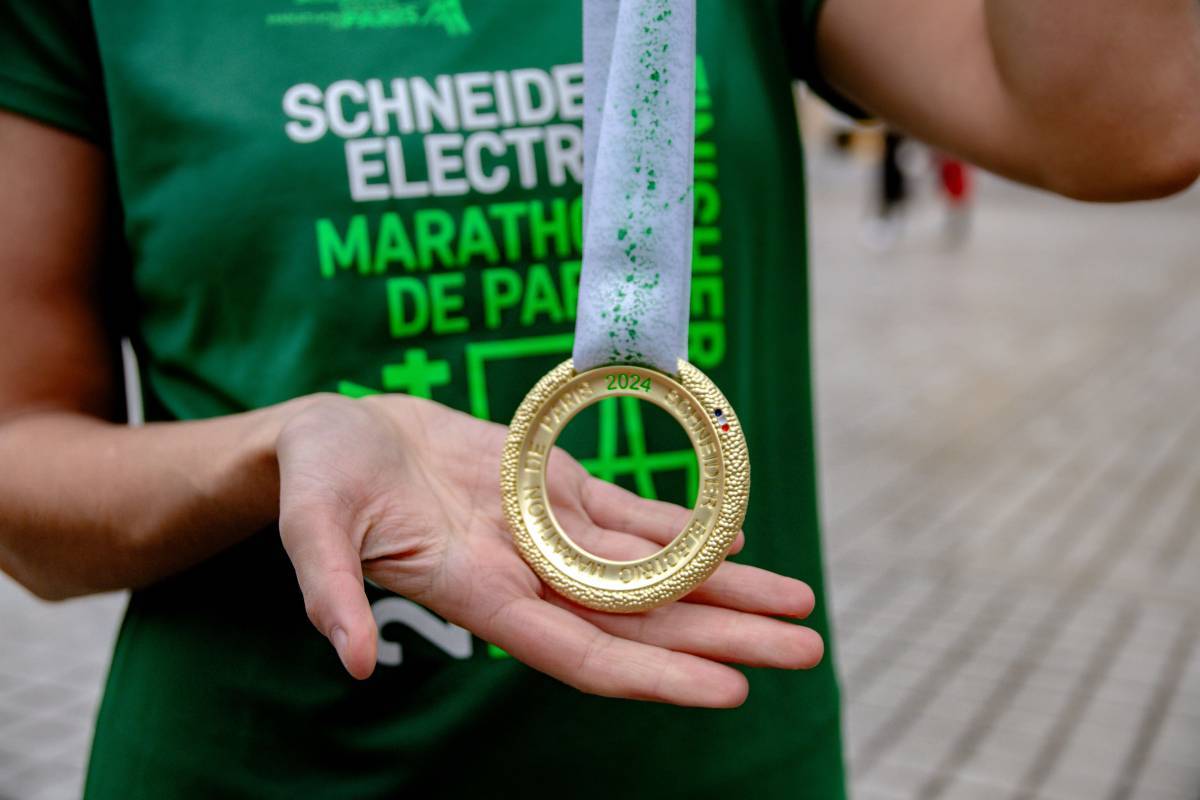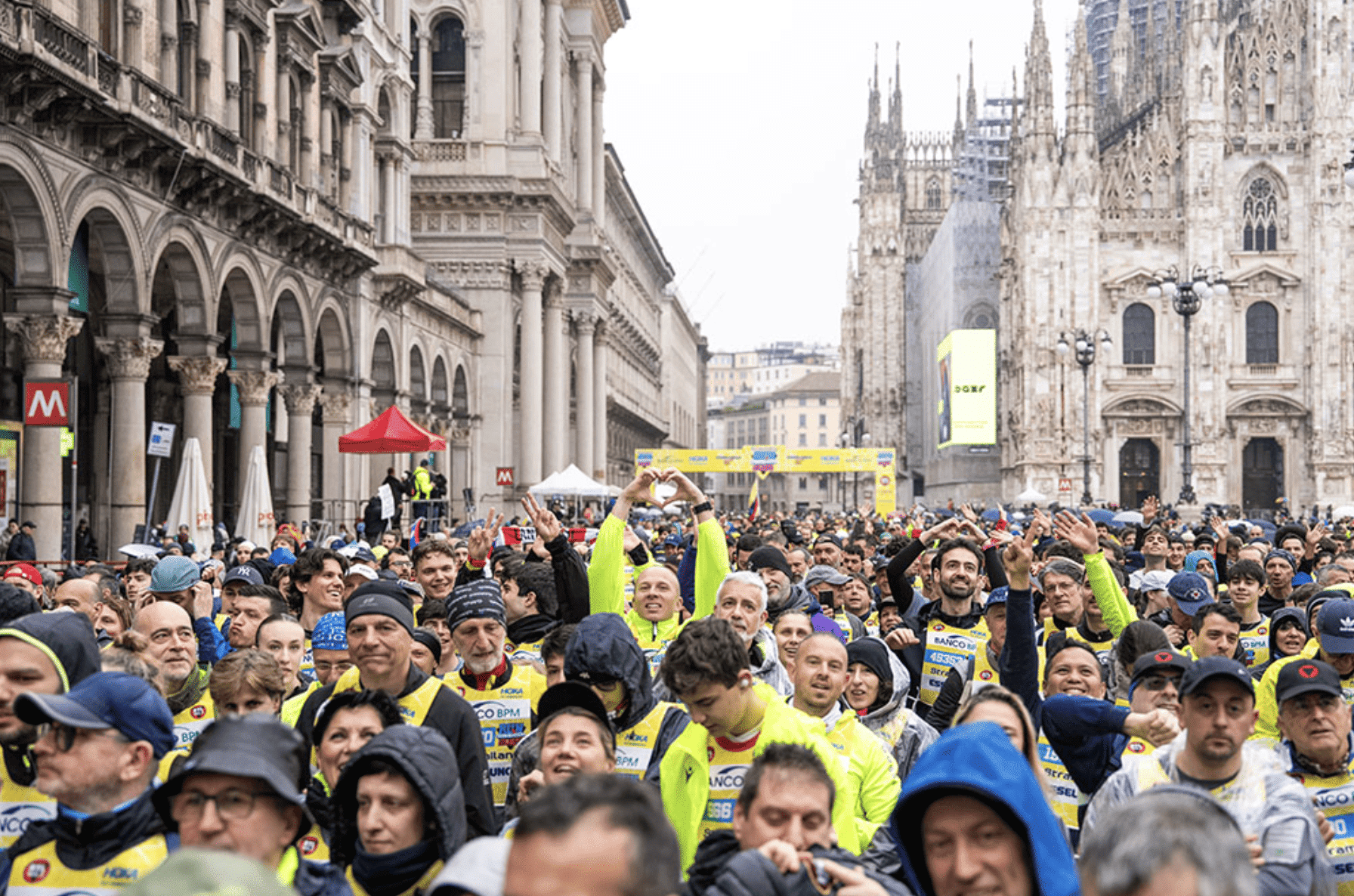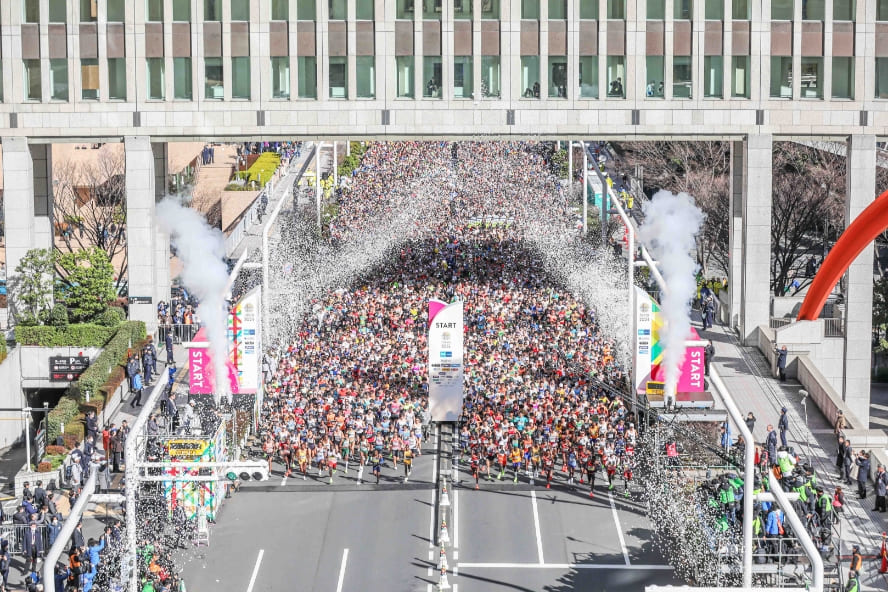Paris Marathon: 5 Little-Known Anecdotes About the Event
On April 13th, the Schneider Electric Marathon de Paris will take place, marking its 49th edition! In nearly half a century, the race has become one of the most important events in the global running scene, with countless small stories contributing to its legendary status…
The magic of Paris. The French capital often charms its visitors. Foreign tourists admire it, Parisians adore it, lovers find refuge in it… Runners also hold it in high regard. In 2023, over 60% of participants came from abroad, making the Paris Marathon one of the most international events in the world! Over 150 nationalities at the starting line. Since 1976, when the Paris Marathon began, its popularity has only grown. Back then, only about a hundred participants took on the course designed in the Bois de Boulogne! Today, more than 50,000 have joined. Marathons.com revisits 4 anecdotes in the history of the Paris Marathon.
| 1. The Paris Marathon and Its First Winner
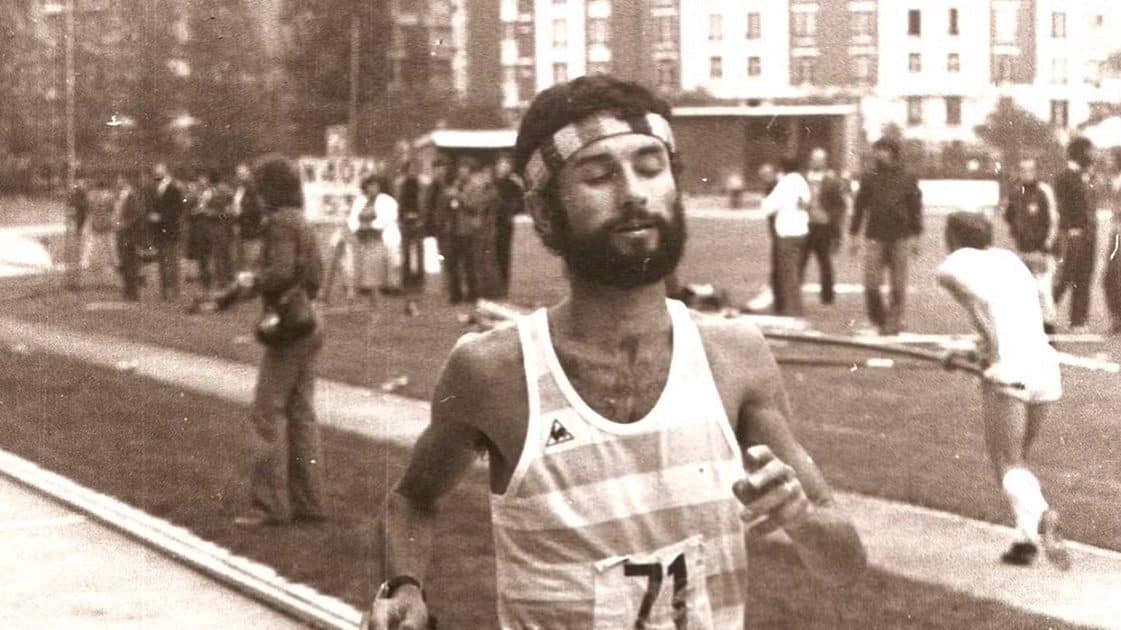
The first anecdote is not really an anecdote at all! His name may not ring a bell, but he remains in the race’s history as its first winner on September 18, 1976: Jean-Pierre Eudier. The young Sorbonne student was among those athletes who were considered unusual at the time, still looked at strangely by passersby when running was not yet mainstream. Eudier ran the first Paris Marathon in 2h20’57, an incredible time for an amateur back then. The race took place entirely in the Bois de Boulogne. Since then, the Paris Marathon route has evolved and certainly contributes to the race’s “glory.” Runners now pass the Eiffel Tower, the Opéra Garnier, Place de la Bastille, Bois de Vincennes… and other Parisian marvels!
A Start… in the Bois de Vincennes. The first marathon did not start from the Champs-Élysées as it does today. Runners started in the Bois de Vincennes, and the race took a very different course, with a much more intimate atmosphere than we see now!
| 2. The Number 1 Bib Assigned by Draw
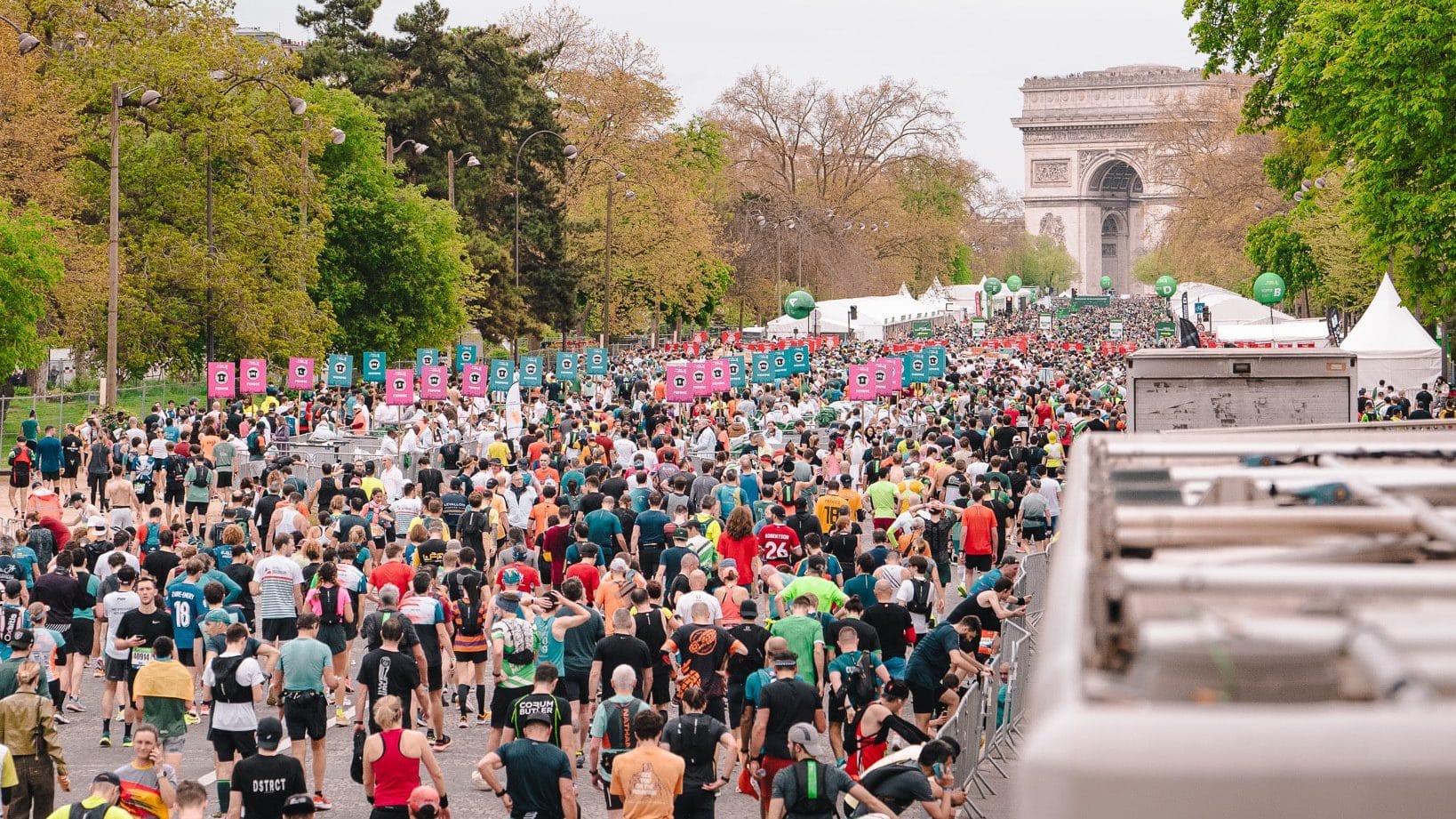
Amateur runners are the heart of the marathon. They give the event its unique and festive character. Awarding them bib number 1 is a way to honor them. Unlike most major international marathons, where bib number 1 is usually reserved for an elite athlete, the Paris Marathon has decided to do things differently. For several years, this coveted number 1 bib has been awarded to an anonymous runner, drawn randomly among the 55,000 participants. Amateurs represent the soul of the marathon. They infuse it with its unique and festive spirit. Awarding them the number 1 bib is a way to honor them. The lucky winner is informed a few weeks before the race and becomes the symbolic ambassador of the event.
| 3. 2017, The Victory of Love
In 2017, the Paris Marathon was marked by a historic performance: the Kenyan couple Paul Lonyangata and Purity Rionoripo won the men’s and women’s titles, offering a unique moment in the race’s history. On that day, Paul Lonyangata, then 24 years old, dominated the men’s race with an impressive time of 2h06’10, a performance that catapulted him among the world’s best marathoners at the time. Meanwhile, Purity Rionoripo achieved an equally remarkable performance, finishing the race in 2h20’55. It’s not just energy drinks that give wings.
| 4. Paris after Athens
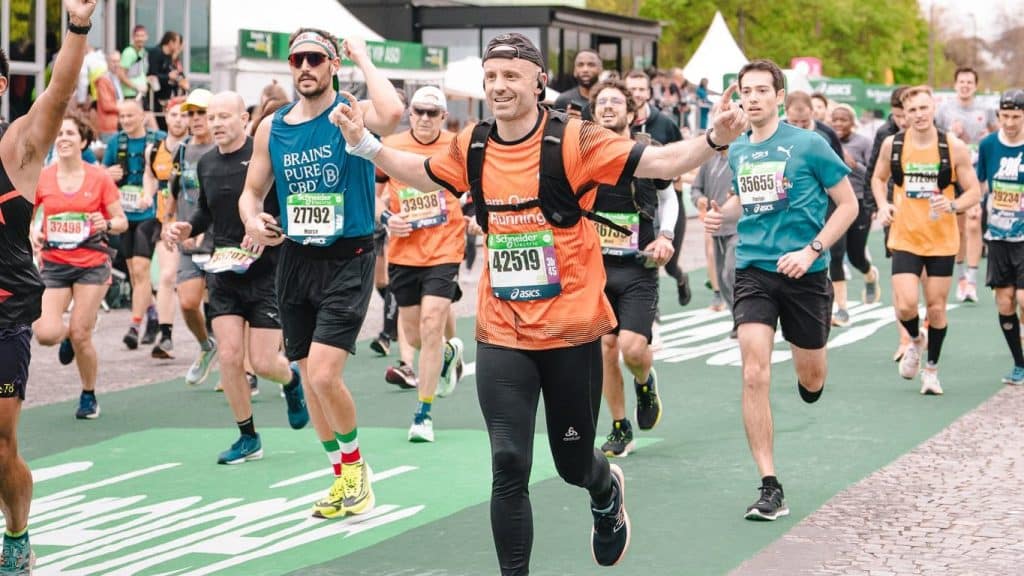
There was a precursor to what we know today as the Paris Marathon… Initiated by the Petit Journal, a Parisian daily of the time. In 1896, just days after the first modern Olympic Games, a marathon took place in Paris. On July 19, a race was launched from Porte Maillot to Conflans (Yvelines). The winner of this race? The Briton Len Hurst, who crossed the line in 2h31’30. The fact that Frenchman Pierre de Coubertin presided over the International Olympic Committee at the time likely played a role in organizing this race in Paris right after Athens. The enthusiasm sparked by the first modern Olympics in Greece was still fresh. It would take until 1976 to see another marathon in Paris.
| 5. A Medal Hiding Discreet Symbols
Each year, the finisher medal of the Paris Marathon features details related to the French capital: a small Eiffel Tower, a subtle nod to the Seine, or an inspiring quote. Organizers even sometimes include a “wink” to the event’s history or a notable sporting personality.
Want more? The Paris Marathon attracts a cosmopolitan crowd. In 2023, runners from over 145 different nationalities participated, making the event one of the most international in the world, just behind the New York and London marathons. In 1976, who could have imagined all this? How far the Paris Marathon has come, now one of the most iconic events in the global running world.
